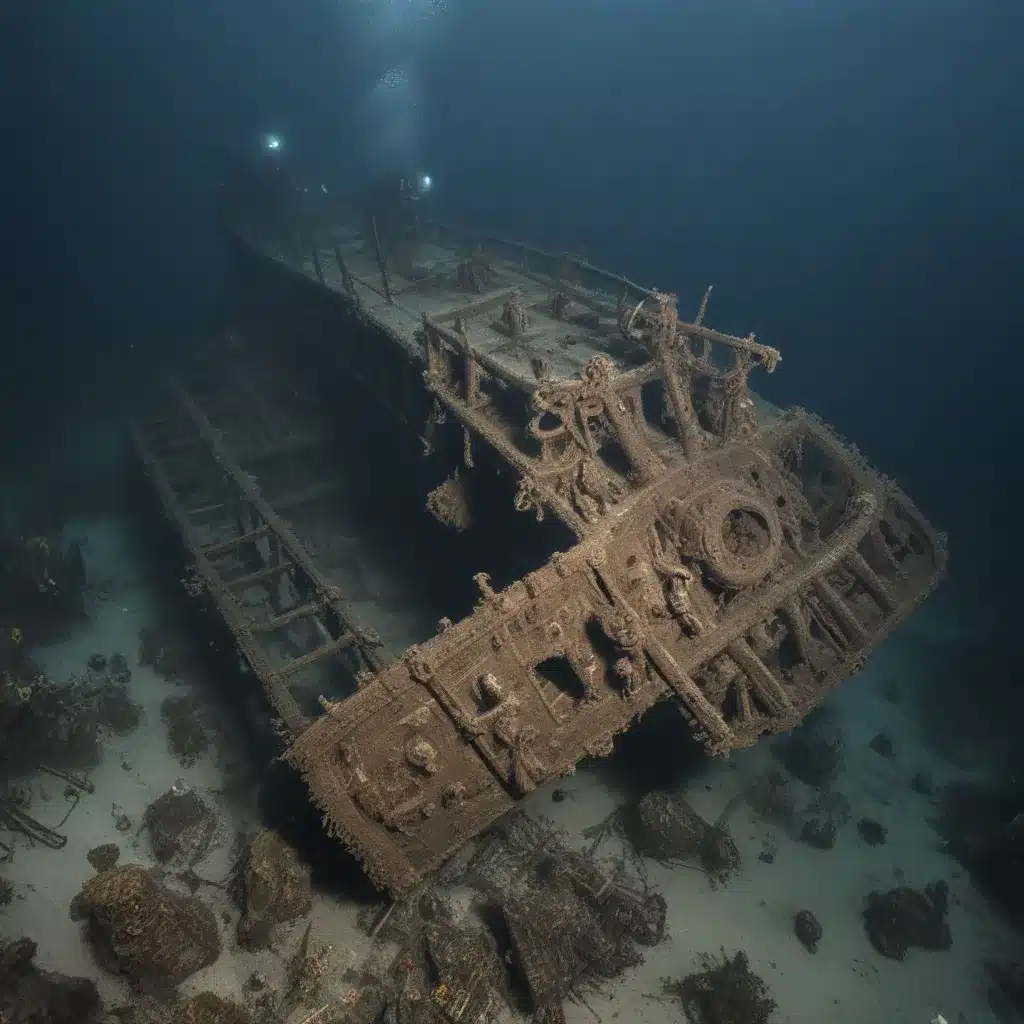
Uncovering the Watery Graves of World War II
I’ll never forget the first time I descended beneath the shimmering azure waters of the Philippines and glimpsed the ghostly outlines of a long-forgotten shipwreck. As I kicked my fins and swam closer, the towering silhouette slowly materialized before me, its once-mighty hull now draped in a veil of colorful coral and swaying sea fans. It was as if I had stumbled upon a portal to the past, a window into a bygone era when these waters were the stage for a global conflict that shook the world.
You see, the Philippines is a veritable treasure trove of WW2 shipwrecks, the remnants of a tumultuous chapter in history that have now become playgrounds for the adventurous souls who dare to explore them. From the northern reaches of the Luzon Strait to the azure depths of the Sulu Sea, these sunken vessels lie in wait, their stories etched into the very fabric of the ocean floor. And as a passionate wreck diver, I’ve made it my mission to uncover as many of these watery graves as I possibly can.
Diving into History: The Wrecks of the Philippines
But what is it that draws us wreck divers to these underwater graveyards, you ask? It’s not just the thrill of the dive, the adrenaline rush of navigating the twisted metal and peering into the unknown. No, there’s a deeper connection, a sense of reverence and respect for the lives that were lost, the stories that lie buried beneath the waves.
Take, for instance, the wreck of the SS American Victory, a cargo ship that was sunk by a Japanese submarine in 1944. As I glided through the eerie silence, my fingers tracing the rusting hull, I couldn’t help but wonder about the men who had once walked these decks, the families they had left behind. The weight of their sacrifice hung heavy in the water, a constant reminder of the price of war.
Or consider the fate of the MV Kiburis, a Dutch freighter that was torpedoed and sunk by a Japanese aircraft in 1942. Today, its hulking frame lies at the bottom of the Sulu Sea, a poignant testament to the brutality of the conflict that once raged across these waters. As I swam through the wreck’s twisted corridors, I couldn’t help but imagine the panic and fear that must have gripped the crew in their final moments.
Uncovering the Untold Stories
But it’s not just the wrecks themselves that captivate me. It’s the untold stories that lie buried within them, the fragments of history that have been preserved in the eternal embrace of the deep. With each dive, I find myself drawn deeper into the past, piecing together the narratives of the men and women who once called these ships their home.
Take, for example, the wreck of the SS Awa Maru, a Japanese passenger liner that was mistakenly sunk by an American submarine in 1945. As I explored the wreck, I stumbled upon a collection of personal effects – a tattered diary, a set of faded photographs, a simple wedding ring – each item a tangible connection to the lives that were lost. It was a sobering moment, a reminder of the human cost of war and the way in which these wrecks have become repositories for the memories of those who perished.
The Thrill of the Dive
But make no mistake, wreck diving in the Philippines is not for the faint of heart. These wrecks are not just historical artifacts; they are also challenging and complex environments that demand a high level of skill and preparation. From navigating through the twisted metal and debris to contending with strong currents and limited visibility, every dive is a testament to the courage and determination of the wreck divers who explore them.
Take, for instance, the wreck of the SS Kōyō Maru, a Japanese tanker that was sunk by American forces in 1944. As I descended into the inky blackness, my heart pounding with excitement and trepidation, I was greeted by a sprawling maze of pipes, hatches, and other debris that seemed to stretch on forever. It was like navigating a labyrinth, each turn and twist presenting a new challenge to overcome.
Preserving the Past for the Future
And yet, despite the dangers, there is a deep sense of responsibility that comes with exploring these wrecks. For we are not just thrill-seekers; we are also custodians of history, charged with the task of preserving these fragile remnants of the past for generations to come.
That’s why I take great care to respect the sanctity of these sites, to approach each dive with a reverence and reverence for the lives that were lost. I meticulously document the wrecks, taking detailed measurements and photographs, and I work closely with local authorities and maritime historians to ensure that these stories are not forgotten.
The Philippines: A Wreck Diver’s Paradise
And so, as I continue to explore the wrecks of the Philippines, I am constantly in awe of the sheer scale and diversity of these underwater treasures. From the towering hulks of massive cargo ships to the sleek silhouettes of nimble warships, each wreck offers a unique and fascinating window into the past.
Whether you’re a seasoned wreck diver or a newcomer to the sport, the Philippines is a true mecca for those who seek to uncover the secrets of the deep. With its crystal-clear waters, stunning marine life, and unparalleled array of historic wrecks, it is a destination that will captivate and inspire you at every turn.
So why not join me on an adventure beneath the waves? Book your wreck diving getaway in the Philippines today and unlock the mysteries of the past, one breath-taking dive at a time.


